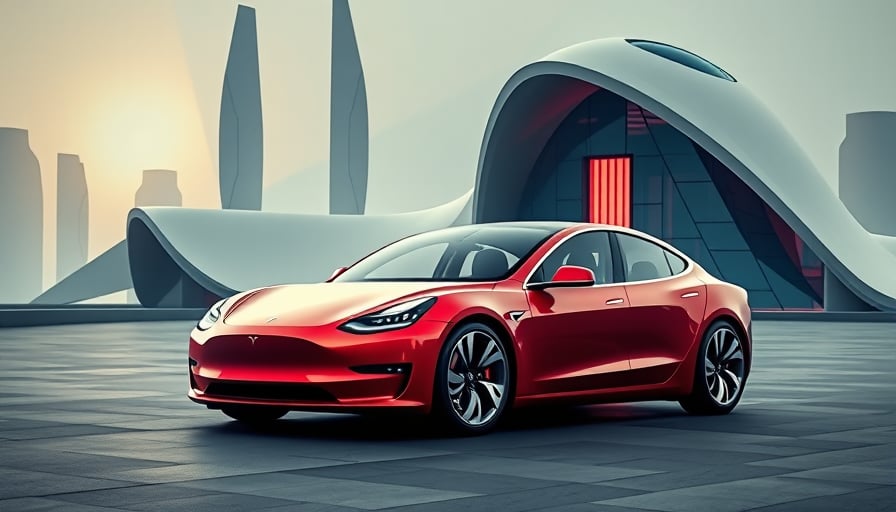Executive Compensation and Investor Sentiment
The latest market activity surrounding Tesla Inc. underscores a growing tension between executive remuneration and shareholder expectations. Following a recent decline in the company’s share price, analysts have scrutinised the proposed compensation package for Chief Executive Officer Elon Musk. The package, which has been criticised for its magnitude by several major shareholders—including a prominent sovereign wealth fund—will be subjected to a formal vote at the forthcoming annual general meeting. Market participants are evaluating how this decision may influence long‑term capital allocation and corporate governance standards within the broader automotive and technology sectors.
Shareholder Dynamics
Large institutional investors often weigh executive pay against performance metrics such as revenue growth, profitability, and risk exposure. In Tesla’s case, the proposed package is perceived by some as disproportionate to recent financial outcomes, particularly in light of volatility in the electric‑vehicle market and intensifying competition from both legacy automakers and emerging start‑ups. The involvement of a sovereign fund adds a layer of scrutiny, given that such investors typically prioritise sustainable returns and risk mitigation over short‑term executive incentives.
Market Implications
Should shareholders vote against the package, Tesla may face reputational costs and potential capital‑raising constraints if it is perceived as misaligned with shareholder interests. Conversely, a successful vote could reinforce Musk’s strategic vision but may also intensify scrutiny of future executive compensation structures across the industry, potentially prompting regulatory dialogue on disclosure and governance.
AI Development Trajectory
Parallel to governance debates, Tesla continues to advance its artificial‑intelligence agenda, positioning itself at the intersection of automotive and computing industries. The company’s next‑generation AI5 chip has attracted attention from venture capitalists and institutional investors, who view it as a critical enabler for autonomous driving and vehicle‑to‑everything (V2X) communications.
Production Timeline Adjustments
Originally slated for earlier deployment, the AI5 chip’s production schedule has been deferred to 2027. This shift raises questions regarding Tesla’s supply‑chain strategy, technology partner alignment, and the scalability of its AI ecosystem. Analysts note that the delay could compress the timeline for deploying full‑self‑driving features, potentially affecting competitive positioning against rivals such as Waymo, Cruise, and traditional automotive manufacturers investing heavily in autonomous technologies.
Strategic Partnerships
The chip’s development has involved collaborations with major semiconductor suppliers, whose own capacity constraints and geopolitical considerations may influence Tesla’s rollout plans. By engaging with diverse partners, Tesla seeks to mitigate risk but may also face challenges in integrating heterogeneous hardware platforms into its vehicle architecture.
Cross‑Sector Insights
Tesla’s dual narrative of executive remuneration and AI innovation exemplifies broader economic and industrial trends:
Governance and Risk Management Companies with high‑profile leaders often encounter heightened scrutiny over compensation structures, particularly when shareholder returns lag behind market expectations. This dynamic is observable across technology and energy sectors where executive pay remains a contentious issue.
Technology Lifecycle and Market Timing Delays in critical hardware components—whether AI chips or battery modules—can cascade into longer product cycles, affecting market share and regulatory compliance. Firms in high‑tech manufacturing must navigate supply‑chain fragility and rapid obsolescence to maintain competitive advantage.
Capital Allocation and Investor Expectations Investors increasingly demand transparent linkages between executive incentives and long‑term shareholder value. Companies that align pay structures with sustainable performance metrics are more likely to attract institutional capital, particularly in periods of heightened market volatility.
Regulatory and Geopolitical Pressures The intersection of autonomous driving technology and national security concerns has prompted tighter scrutiny from regulators. Similarly, geopolitical tensions around semiconductor supply chains influence corporate strategies across technology and automotive industries.
In sum, Tesla’s recent developments highlight the complex interplay between governance, innovation, and market forces. The outcome of the upcoming vote on CEO compensation and the eventual deployment of the AI5 chip will likely reverberate across the automotive, technology, and investment communities, offering a case study in balancing executive ambition with shareholder accountability and technological feasibility.
